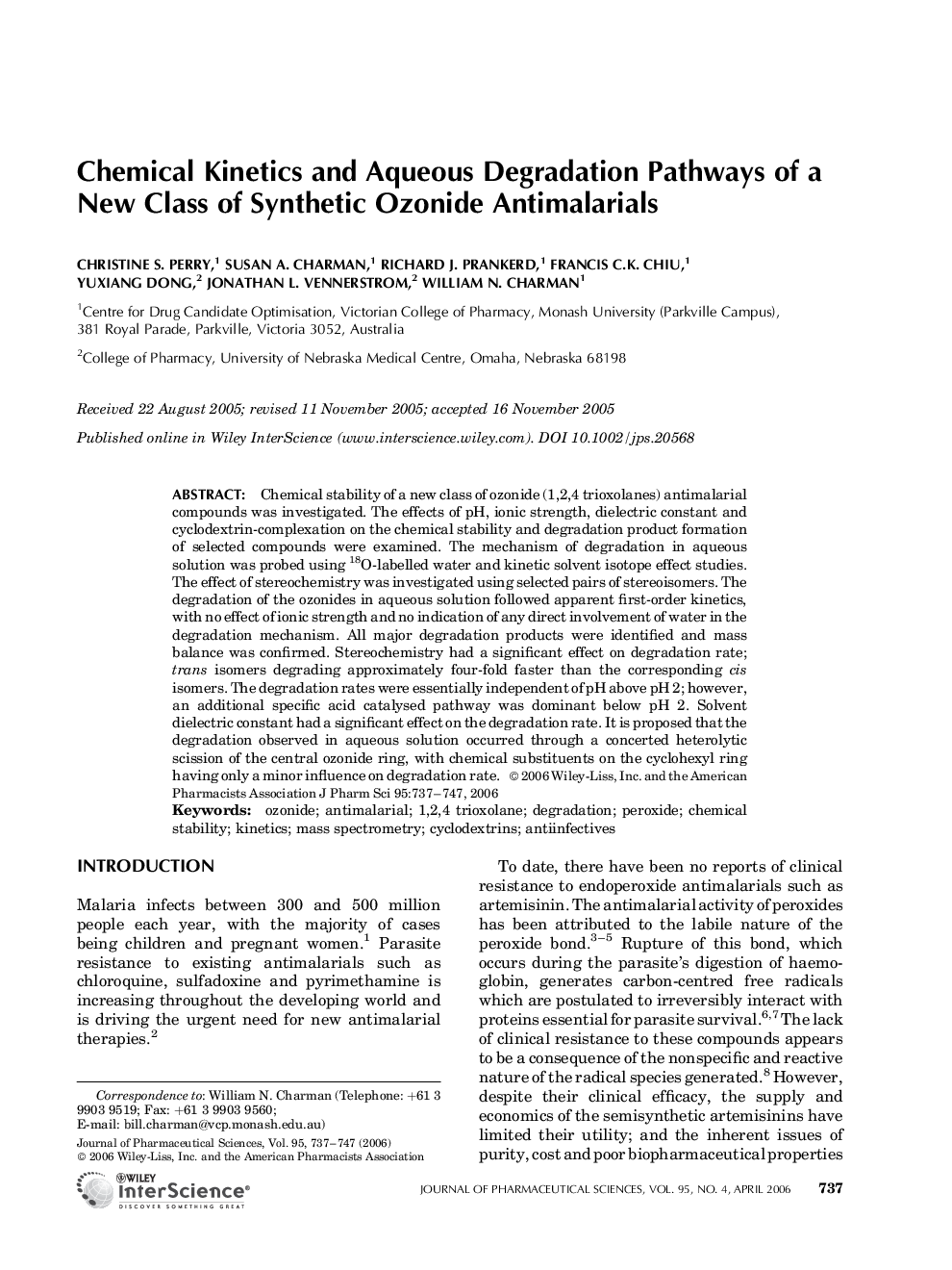| Article ID | Journal | Published Year | Pages | File Type |
|---|---|---|---|---|
| 2488023 | Journal of Pharmaceutical Sciences | 2006 | 11 Pages |
Abstract
Chemical stability of a new class of ozonide (1,2,4 trioxolanes) antimalarial compounds was investigated. The effects of pH, ionic strength, dielectric constant and cyclodextrin-complexation on the chemical stability and degradation product formation of selected compounds were examined. The mechanism of degradation in aqueous solution was probed using 18O-labelled water and kinetic solvent isotope effect studies. The effect of stereochemistry was investigated using selected pairs of stereoisomers. The degradation of the ozonides in aqueous solution followed apparent first-order kinetics, with no effect of ionic strength and no indication of any direct involvement of water in the degradation mechanism. All major degradation products were identified and mass balance was confirmed. Stereochemistry had a significant effect on degradation rate; trans isomers degrading approximately four-fold faster than the corresponding cis isomers. The degradation rates were essentially independent of pH above pH 2; however, an additional specific acid catalysed pathway was dominant below pH 2. Solvent dielectric constant had a significant effect on the degradation rate. It is proposed that the degradation observed in aqueous solution occurred through a concerted heterolytic scission of the central ozonide ring, with chemical substituents on the cyclohexyl ring having only a minor influence on degradation rate.
Keywords
Related Topics
Health Sciences
Pharmacology, Toxicology and Pharmaceutical Science
Drug Discovery
Authors
Christine S. Perry, Susan A. Charman, Richard J. Prankerd, Francis C.K. Chiu, Yuxiang Dong, Jonathan L. Vennerstrom, William N. Charman,
